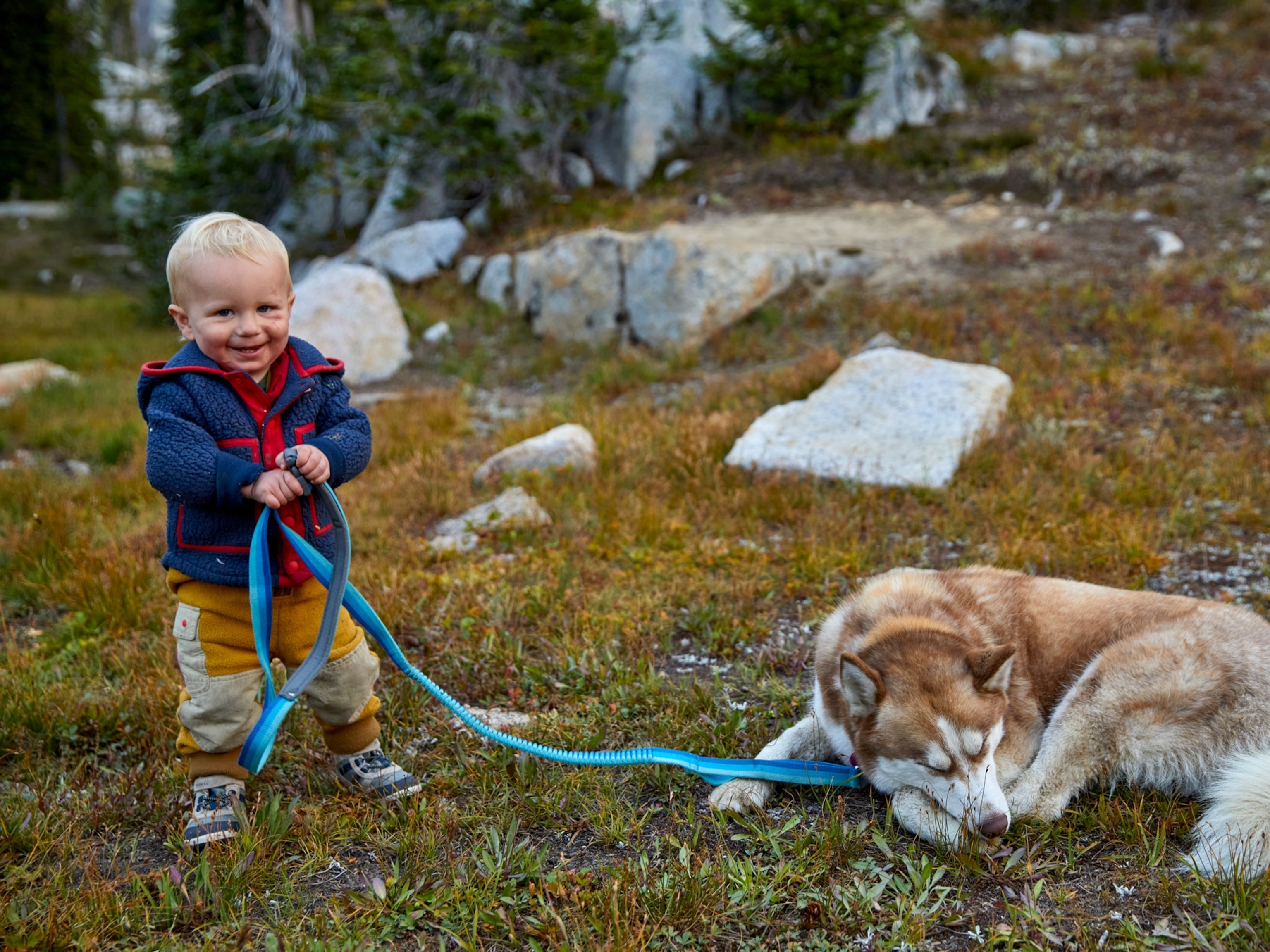
Rare Singing Dog Photographed in New Guinea?
Elusive canine was feared extinct in mountain habitat.
A rare dog may finally be having its day: The New Guinea singing dog, an elusive canine related to the Australian dingo, has been possibly spotted in New Guinea.
Feared extinct in its highlands habitat, the singing dog—whose name comes from its coyote-like howls—was last photographed in the wild 23 years ago.
At least 200 captive singing dogs live in zoos and as pets around the world, descendants of a few wild dogs captured in the 1950s. But the animals—which resemble a domestic dog breed called the Shiba Inu—are severely inbred due to a lack of new genes.
In September, members of an Adventure Alternative Borneo tour group hiking the remote Mandala Mountain in West Papua, Indonesia (map), were surprised to see a tawny, thick-coated dog staring at them from a hillside.
"We watched it for around 15 minutes as it continued to watch us. It seemed as curious as we were, but not particularly scared or nervous," tour director Tom Hewitt wrote on his blog.
"What stood out was how healthy it looked upon closer examination with binoculars." (See: "Pictures: Thousands of New Species Found in New Guinea.")
Singing Dog Mystery?
Various circumstances surrounding Hewitt's experience support a singing dog sighting, some experts say.
For one, the dog showed no fear—typical of a shy animal that has lived isolated from humans or predators for centuries, said James McIntyre, a Florida-based independent zoologist.
What's more, the dog was seen exactly where it's known to exist—an extremely secluded, high elevation that's "a four-day walk from nowhere," noted McIntyre, who went to New Guinea in 1996 to look for singing dogs. Local villagers told him at the time that singing dogs still thrived in higher elevations, but McIntyre found only paw prints and scat.
Now that there's been a possible sighting, "those of us in the New Guinea singing dog community are quivering with anticipation. When I started my field study, I just went to an area where there was a possibility" of finding singing dogs, he said.
"But now, we have an exact location where we know at least one dog lives, and from a scientist's standpoint, this is extremely exciting."
But Janice Koler-Matznick, head of the U.S.-based New Guinea Singing Dog Conservation Society, isn't so sure that the photo is authentic. She said the singing dog in the picture has a light color never seen before in singing dogs, which are either reddish brown or black and tan.
"It's not impossible for that mutation to show up in the wild," she said, but "until it's really authenticated by some outside [photography] expert, I'll have to reserve judgment."
A Boost to Singing Dog Conservation?
But if the photo turns out to be real, that would be music to Koler-Matznick's ears. She has been working to get the singing dog listed as a subspecies with the International Union of Conservation of Nature for decades—a difficult task without recent population or DNA data.
A subspecies designation would allow Koler-Matznick and others to advocate for conserving the animal, one of the most ancient dogs.
"Here we have a real chance to preserve the remnants of the earliest type of dog," she said.
And that could be done, she said, "by merely enlisting cooperation of local tribes" to work with conservationists—for example by keeping their domestic dogs away from highlands, where the two animals could interbreed.
Villagers in New Guinea already hold the singing dog in high esteem. For instance, in 1996, McIntyre noticed villagers hanging singing dog jaws over their doorways as a sign of reverence toward the animal.
If funds can be raised, Koler-Matznick plans to organize an expedition to New Guinea to set up the first ever camera-trap survey of the singing dog. Then, possibly, some dogs could be trapped and taken back to the U.S. to infuse new genes into captive singing dog bloodlines. Tom Wendt, co-founder of the Washington State-based group New Guinea Singing Dog International, also said he plans to launch an expedition.
Koler-Matznick, who has kept and bred "singers" as part of a breeding program, took her scientist's hat off ever so briefly to, well, sing their praises.
"The singers are like the bonobos of the dog world," she said. "They are eerily intuitive."





